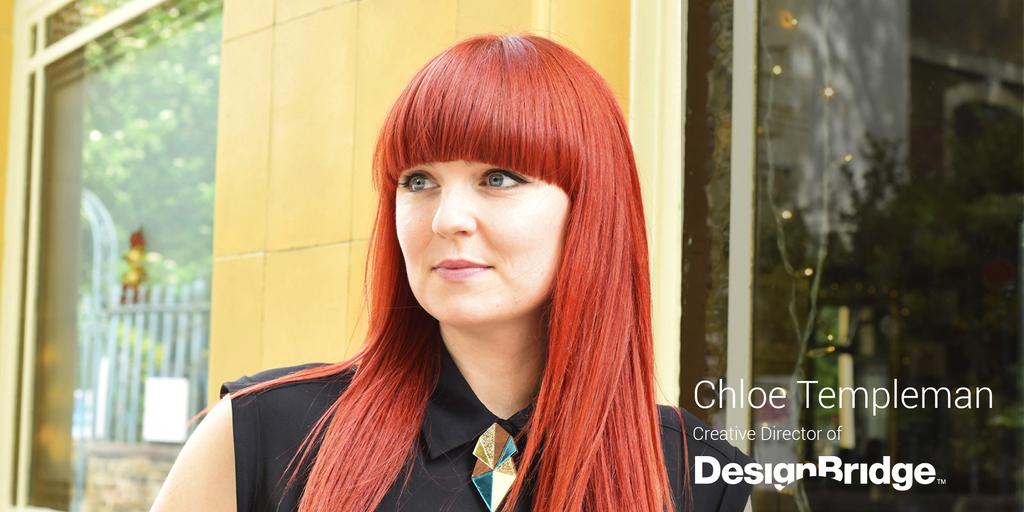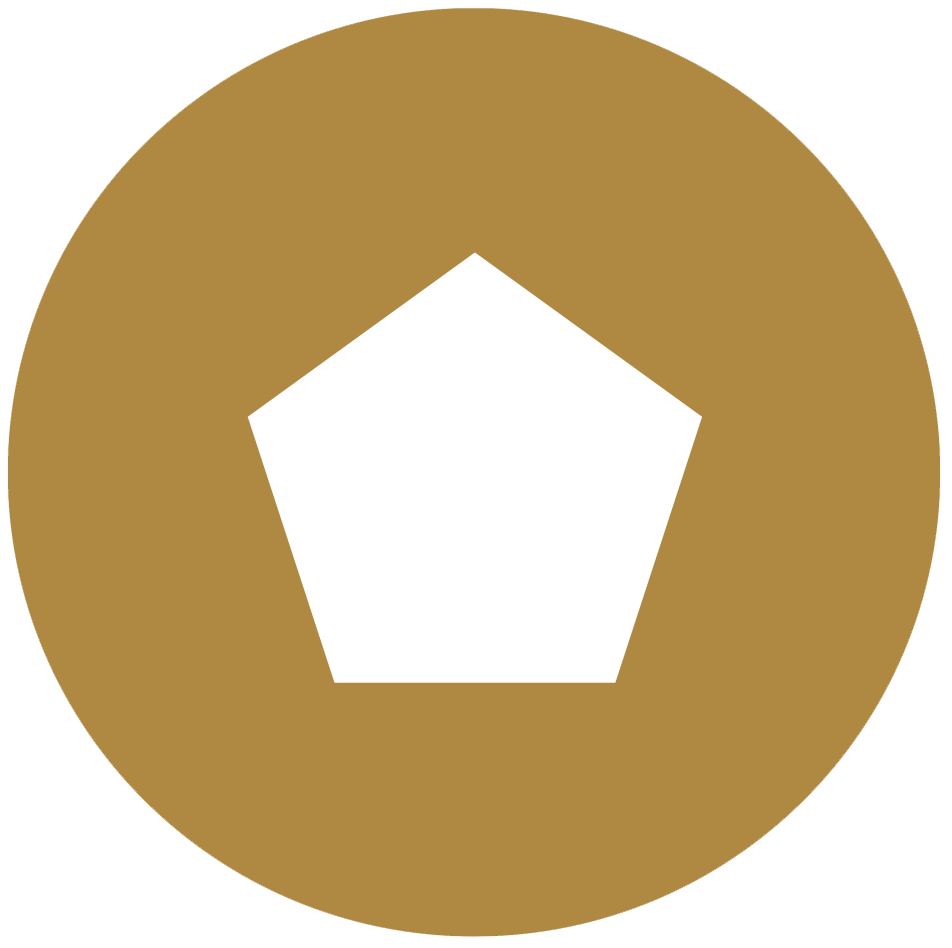
Back Women in Design - Chloe Templeman, Creative Director for Design Bridge
What was the starting point of your career in design?
My big break was at uni after winning a place on a bursary scheme set up by the then Brand Union (now Superunion), which lead to me coming down to London on a placement for a few weeks. While I was there I won the competition they set all of their bursary students, got published in a design magazine, and landed myself a job - it was a busy few weeks and all a bit of a whirlwind! But it did mean that, before I had finished uni back in Scotland, I had a job down in London, which was a pretty special thing for me and for my family who I desperately wanted to prove to I could “make it” with a career in design.
What made you realise you want to work in design?
I knew from a very young age that I wanted to go to art college. I was always creative with drawing and making things when I growing up, but I didn’t really know what Graphic Design was, or that you could do it as a job. It wasn’t until I went to a degree show for inspiration (after failing to get into art college and being desperately lost on what to do next!) that I found Graphic Design and I knew straight away that it was for me! I saw the exhibition and I actually remembering asking “What’s that course…I want to do that”. I did eventually get into my chosen art college to study Graphic Design after working my ass off and getting a strong portfolio together, and I had to convince my parents that design was “a proper job” and that they didn’t need to worry about me. I was lucky because they were always super supportive and encouraged me to follow my passion, which I think helped me a lot.
What drives you, what is your daily source of inspiration?
At the moment I get huge amounts of inspiration from the juniors and new graduates at Design Bridge, as well as the ones I meet through industry movements like D&AD New Blood SHIFT and New Blood Academy (for which we set a brief for this year). I am at that point in my career when I can help the new generation of creatives, but equally, they really help and inspire too. Their fearlessness is something I never want to lose. But on the other side, I am also inspired and driven by the more experienced people around me and those who have come before me. I know I am standing on the shoulders of giants and many amazing women throughout my career have paved the way and been a huge influence on me. Women like Antonia Hayward, Claire Robertshaw, Emma Follett, Sophie Maxwell and Jack Renwick have all played their part in inspiring me and continually push me to do better every day.
Which project(s) are you most proud of and why?
I am immensely proud of the Fortnum & Mason work we have done over the last 5 or so years. I first started working on the brand as a Senior Designer and have taken it with me along my journey, and I’m now the Creative Director across our Fortnum’s work. I genuinely think that some of the best work I’ve ever done is for Fortnum & Mason, and it’s allowed me to work with so many amazing creatives at Design Bridge, as well as collaborating with talented illustrators like Coralie Bickford-Smith, Kristjana S. Williams and Timorous Beasties to name a few. We have won over 30 international awards over the years for our Fortnum’s work and I still get excited every time a new brief comes in. The clients continue to trust us and we have a great working relationship, something that was recognised with the D&AD black pencil we picked up this year for collaboration – all in all, it’s a very special account for me and has taught me a lot along the way.


What are the biggest challenges in your work and how do you overcome them?
By its very nature the creative industry is hugely exciting and challenging, and managing the highs and lows can be a challenge. Creativity and confidence are so closely linked: you do your best work when you are feeling great, and great work feeds that. Learning to cope with the setbacks, to not take that criticism to heart, and to think positively all takes work and it is so important. Imposter Syndrome is something I can recognise and relate to, and it does have the potential to hold me back. Great books, podcasts & Ted Talks on the subject, along with mentoring, helps me to keep this in check and continue to build belief in myself.
Would you say that your position as a female leader creates more opportunities or obstacles when dealing with clients?
I find that some clients relate better to me than others, but that is usually down to chemistry rather than gender. I have current clients, both male and female, with whom I have great trust, respect and empathy. That said, gender can be an advantage. For example, a recent pitch win for a feminine hygiene innovation was undoubtedly influenced and positively fuelled by our all-female team, which mirrored the clients. We stood apart from our competitors and the client commented how hard it had been for them to even find a female Creative Director. This shocked me and made me a little disappointed that more women CD’s aren’t being showcased as I know we are out there!
Do you ever encounter any difficulties in your career because of your gender?
I have had my own #metoo moments for sure, but the awareness within society on this topic has undoubtedly forced people to consider their behaviour more closely. What is more common is the kind of everyday sexism in the form of “banter”. I now have the confidence to call this out, which is the best line of defence in my opinion, especially around younger people who may not have found their confidence to speak up yet when it happens to them. But as far as any other difficulties because of my gender, I would like to think most people don’t even see or judge me for being a woman, but for the work I do, the ideas I have, and the experience and qualities I bring to my role as Creative Director, both for my team and for my clients.
Being a creative industry, is the design sector free from gender stereotypes (compared to more “conservative” industries)?
The design industry is very aware of the issues it faces, and many agencies and organisations are actively driving positive change. There’s progress for sure, and I know many great women in leadership positions, but I don’t think we are free of gender stereotypes yet because unconscious bias is so deeply ingrained in society. I have had a varied career in terms of the types of work I have worked on, but sometimes I still find myself working on the more traditional “female brands”, so I try to break this as much as I can when building teams around projects. For me, women are still hugely under-represented at Creative Director level and beyond, which is depressing. To quote a recent statistic I read from Jessica Walsh: “70% of design students are women, but only 5 to 11% of creative director positions are held by women. Only 0.1% of creative agencies are women-owned. ZERO. POINT. ONE. PERCENT. How does this make any sense when women drive about 80% of consumer purchasing.”
In your opinion, is there a noticeable shift in the industry in terms of gender roles?
There is a notable shift in the conversations around this topic. Groups such as Ladies, Wine & Design and Kerning the Gap are bringing women in the industry together to discuss, debate and drive positive change, and the women I work with are definitely more inspired and optimistic around the topic than a decade ago. When I was a junior the industry was very male-dominated and the few female Creative Director’s I knew had a more traditional alpha approach to leadership. I tended to be the only woman on a team full of men, but when I look at our studio at Design Bridge now I see a much better balance. And although it will take time for this generation to develop into leadership roles or start their own agencies, I believe change will happen. I think more importantly there’s been a much-needed shift in the industry in terms of a more diverse workplace overall. It’s certainly a work in progress, and alongside my colleagues at Design Bridge I am involved in incredible programmes such as D&AD New Blood SHIFT and Creative Mentor Network that both strive to blow the doors open to a wider represented workforce in the creative industry that takes into account not only race but background and class and gender. This is hugely important to me and, working with programmes like these, together we can hopefully get to a stage in the near future where the creative workplace is full of a mix of people with different experiences, points of view, and ways of thinking. That’s the kind of creative hub we all want to be part of (The Other Box, We are Stripes and The Girlhood are all other initiatives worth looking up).
How would you change the industry to have more equal gender, any project to help them? Or any way we can change?
Seeing is believing. The more women in leadership positions we see, the more attainable it feels for those coming through. Design Bridge London is headed up by a female Managing Director, Chief Creative Officer and Executive Creative Director, all of whom lead with a brilliant mix of commercial and cultural awareness, and a big dose of empathy. It’s open, inclusive and encourages great ideas and creative energy to flow. Tackling the points at which women tend to fall away from the industry is important. Gender is not a problem at Graduate level, so we need to ensure that women feel motivated and supported to thrive in this industry throughout their careers. Parenthood is often a time when women choose to freelance or take a break from their careers. There are many reasons for this, but one barrier is the outmoded attitudes around flexible working and presenteeism in the office. It’s impressive to see women supported through that time and come back fired up and rising further at Design Bridge – they’re not being held back. But it’s not all down to the Mums, and I love seeing how some of my male colleagues have negotiated flexible hours for nursery drops and bath times and taking shared parental leave. For me, equality should be exactly that and I am conscious that in the necessary drive for change, we do not alienate men or raise generations of boys who then feel inferior. Let’s remove the barriers (and the egos) and embrace a culture of open positive collaboration – sounds great, doesn’t it?!
About Chloe...
Chloé’s career began at Brand Union London, where she worked for 3 years before joining Design Bridge in 2010 and has since worked her way up to become a Creative Director. Counting Fortnum & Mason, Diageo and Unilever amongst her clients, Chloé has a passion for collaborating with illustrators and plays an active role in nurturing young creative talent.
Find out more about Design Bridge: https://www.designbridge.com/about/






